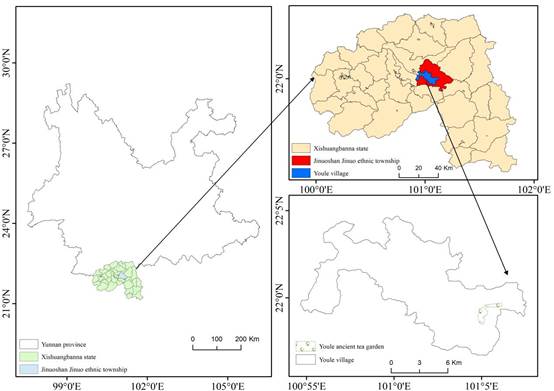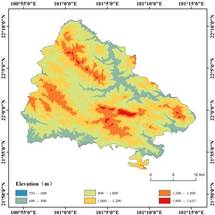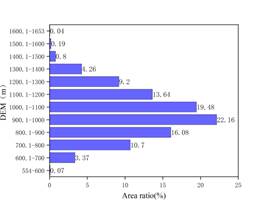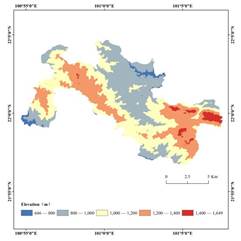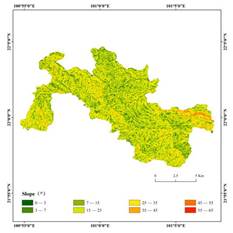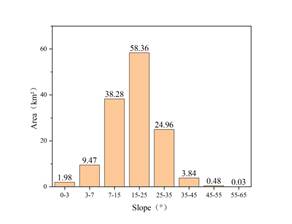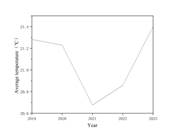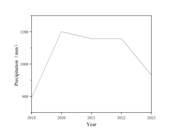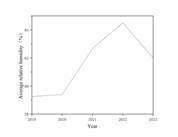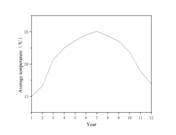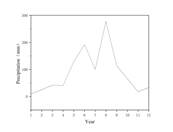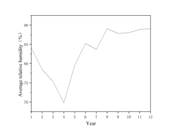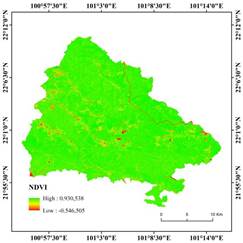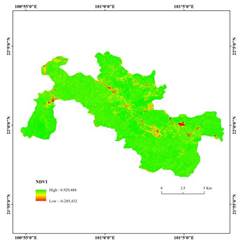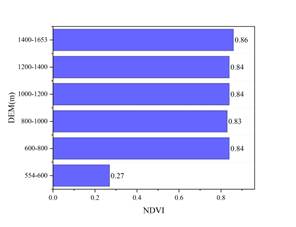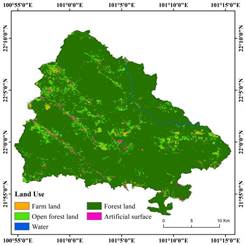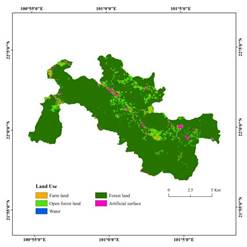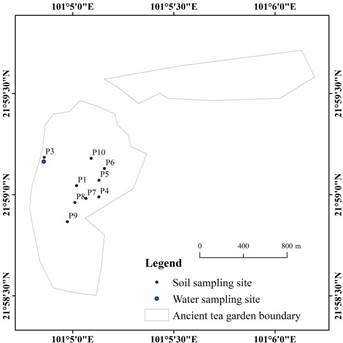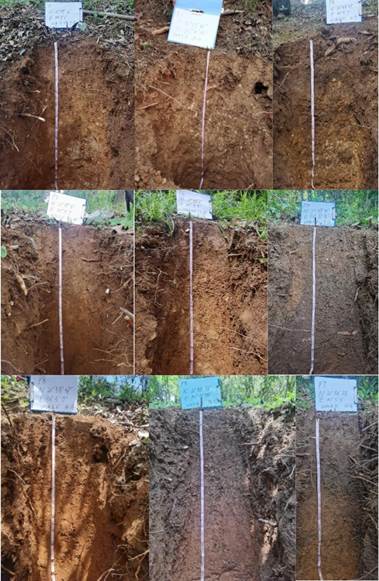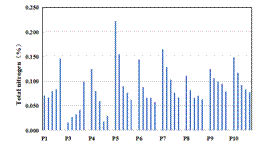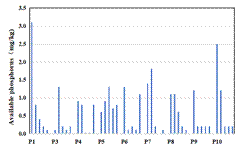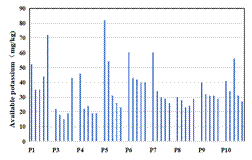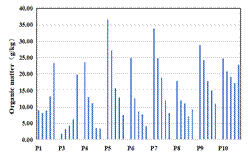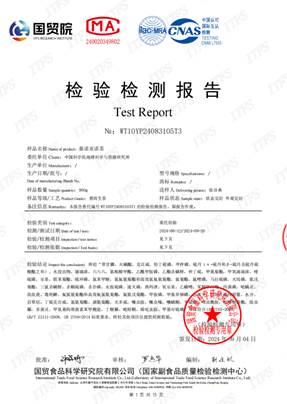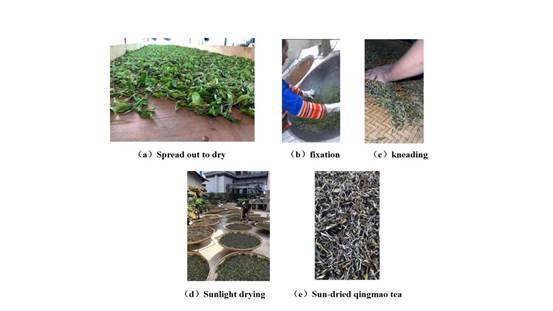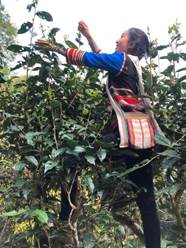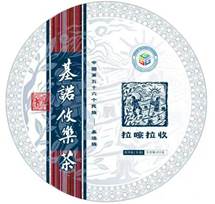Ancient Tea Gardens of Jinuo Youle Tea in Tropical Mountainous Regions
Abstract
Jinuo Mountain, located in Jinghong City of Xishuangbanna Dai Autonomous Prefecture, Yunnan Province, lies within the hilly extensions of the Wuliang Mountain in the Hengduan Range. As one of Yunnan’s 6 historic tea mountains renowned for Pu’er tea, it preserves centuries-old traditions of wild tea growth, cultivation, processing, consumption, and trade. Jinuo Youle Tea is harvested exclusively from ancient tea gardens in Youle Village—the heartland of Jinuo Mountain’s most abundant and productive ancient tree tea resources. Characterized by mid-to-high elevation, exceptional vegetation coverage, optimal climate, stable ecosystems, and fertile soils, Youle Village’s unique terroir imparts distinctive aroma and flavor profiles to the tea, establishing the region as an ideal origin for premium Pu’er tea and exemplifying the national modern ecological principle. This study examines Youle Village through multidimensional analysis of Jinuo Youle Tea’s natural ecology, quality attributes, developmental management, and cultural heritage, synthesizing a sustainable conservation model for tropical mountainous ancient tea garden ecosystems. The supporting dataset encompasses spatial boundaries, natural geography, cultural history, socioeconomic metrics, operational protocols, product testing records, and visual documentation. The dataset is archived in .shp, .tif, .xlsx, .docx, and .jpg data formats, and consists of 109 data files with data size of 163 MB (compressed into 1 file with 88 MB).
Introduction
China is the homeland of tea, and Yunnan serves as both the origin center and birthplace of Pu’er tea, boasting millennia-old tea cultivation traditions. Simultaneously, Yunnan preserves the world’s largest expanses of wild tea tree communities and ancient tea plantations, hosting the greatest number of preserved ancient tea trees and wild tea varieties[1]. As a unique, high-quality ecosystem, ancient tea plantations possess self-sustaining stability mechanisms—including natural pest control and autonomous soil fertility maintenance—eliminating the need for artificial nutrient supplementation or chemical interventions. This allows ancient tea garden teas to retain their exceptional quality.
Tea cultivation constitutes a foundational pillar industry in Jinuoshan Township, home to the region’s best-preserved and most expansive ancient tea garden—the Youle Ancient Tea Garden in Youle Village. Spanning 183.01 ha, with 120 ha dedicated to ancient tea trees, the garden hosts trees characterized by basal circumferences of 50–120 cm, trunk diameters (at breast height) of 30–80 cm, typical heights of 2–3 m, canopy spreads of 1.5–3 m, and ages predominantly ranging from 200 to 300 years[1]. This thriving ecosystem delivers abundant resources to Youle villagers, epitomizing the national modern ecological principle. As the primary homeland of the Jinuo ethnic group, the township further imbues Jinuo Youle Tea with distinctive cultural richness through its profound indigenous heritage, deeply rooted rainforest traditions, and meticulously conserved forest resources, collectively forging the tea’s unparalleled natural terroir and ethnocultural identity.
Jinuo Youle Tea trees predominantly exhibit arboreal and semi-arboreal forms with robust growth stature. The cultivar composition centers on the Youle Large-Leaf variety, complemented by naturally hybridized populations categorized into long-leaf/elliptical-leaf types and red-stem-green-bud/green-stem-green-bud morphotypes. Characterized by thick, fleshy leaves rich in amino acids and nutrients, these trees yield tea with a mellow flavor profile, distinctive persistent aroma, and clear, bright liquor. Such exceptional scarcity, uniqueness, and premium quality render it highly prized among tea connoisseurs. The plantation demonstrates remarkable ecological features with abundant epiphytes: dendrobium orchids commonly grow on ancient tea tree branches, while lush understory vegetation provides optimal habitats for wild bee colonies that produce premium honey. This natural symbiotic association between orchids, honeybees, and ancient tea trees fosters exceptional biodiversity and superior ecological conditions.
In summary, the cultivation and production of Jinuo Youle Tea exhibit profoundly distinct geographical imprints. Building on this foundation, this study leverages the “Global Change Research Data Publishing & Repository” to develop a case dataset for ecological conservation and sustainable development in the tea-growing areas[2,3], with Youle Village—home to the ancient tea gardens—serving as the focal research zone. This dataset aims to provide scientific scaffolding for advancing both environmental preservation and sustainable practices within the ancient tea gardens of Jinuoshan Township.
Metadata of the Dataset
Information on the metadata of the GIES case on ancient tea gardens of Jinuo Youle Tea in tropical mountainous regions[4], including the authors, geographical region, data year, data size, data files, etc., is detailed in Table 1.
Table 1 Metadata summary of the GIES case on ancient tea gardens of Jinuo Youle Tea in tropical mountainous regions
| Items | Description |
|---|---|
| Dataset full name | GIES case on ancient tea gardens of Jinuo Youle Tea in tropical mountainous regions |
| Dataset short name | JinuoYouleTeaCase24 |
| Authors | Kang, L., Institute of Geographic Sciences and Natural Resources Research, Chinese Academy of Sciences, kanglei@igsnrr.ac.cn Lu, J. J., Hebei GEO University, 1290510151@qq.com Liu, H. X., Hubei University of Technology, 8953640@qq.com Yang, F. B., China Science Publishing & Media Ltd., yangfengbo@mail.sciencep.com Tian, Q., Yunnan Minzu University, tianqian@vip.126.com Li, J. X., The Central University for Nationalities, lijx.18s@igsnrr.ac.cn Zhou, H. J., Yunnan Agricultural University, 1051195348@qq.com Xue, X. T., Zhou Hongjie Master Studio, 501910679@qq.com Yu, K. N., Ethnic and Religious Affairs Bureau of Xishuangbanna Dai Autonomous Prefecture, 609212648@qq.com Kong, Z., Xishuangbanna Dai Autonomous Prefecture Meteorological Bureau, 8299246@qq.com Zeng, S., Jinuoshan Jinuo Ethnic Township People's Government, Jinghong City, 289597095@qq.com Bai S. Q., Xishuangbanna Youle Ren Lachala Shou Agricultural Professional Cooperative, 2865946761@qq.com Jie, B. L., Jinghong Amaozuomi Primary Tea Processing Factory, 296344949@qq.com Liang, M. Y., Beijing Liang Mingyu Glass Art Design Co., Ltd., 864910827@qq.com |
| Geographical region | Jinuoshan Jinuo Ethnic Township, Jinghong City, Xishuangbanna Dai Autonomous Prefecture, Yunnan Province, China |
| Year | 1994–2025 |
| Data format | .shp, .tif, .xls, .docx, .jpg |
| Data size | 163 MB |
| Data files | boundary data of the case area, natural environment, varietal characteristics, historical culture, and operational management |
| Foundation | People’s Government of Jino Ethnic Township, Jinuoshan, Jinghong City, Xishuangbanna Dai Autonomous Prefecture (2024) |
| Data publisher | Global Change Research Data Publishing & Repository, http://www.geodoi.ac.cn |
| Address | No. 11A, Datun Road, Chaoyang District, Beijing 100101, China |
| Data sharing policy | (1) Data are openly available and can be free downloaded via the internet; (2) End users are encouraged to use Data subject to citation; (3) Users, who are by definition also value-added service providers, are welcome to redistribute Data subject to written permission from the GCdataPR Editorial Office and the issuance of a Data redistribution license; and (4) If Data are used to compile new datasets, the “ten percent principal” should be followed such that Data records utilized should not surpass 10% of the new dataset contents, while sources should be clearly noted in suitable places in the new dataset[5] |
| Communication and searchable system | DOI, CSTR, Crossref, DCI, CSCD, CNKI, SciEngine, WDS, GEOSS, PubScholar, CKRSC |
DOI: https://doi.org/10.3974/geodp.2025.02.02
Dataset Availability Statement:
The dataset supporting this paper was published and is accessible through the Digital Journal of Global Change Data Repository at: https://doi.org/10.3974/geodb.2025.05.09.V1.
Case Data Development
Case Area
Located in southwestern Yunnan Province and northeast of Jinghong City, Xishuangbanna Dai Autonomous Prefecture, Jinuoshan Township lies in the hilly extensions of the Wuliang Mountains within the Hengduan Range (Figure 1). Geographically positioned between 100°25'E–101°25'E and 21°59'N–22°59'N, it sits approximately 27 km from downtown Jinghong. The township encompasses a total area of 622.9 km², with forested land spanning 497,333 ha and a forest coverage rate of 94.01%. Situated south of the Tropic of Cancer in a low-latitude zone, it experiences a humid subtropical and south subtropical monsoon climate characterized by abundant sunshine, ample rainfall, and pristine air quality. The dominant acidic red soil features high organic content, a pH range of 4.3–5.2, deep horizons, and exceptional fertility. This unique geographical environment has forged Jinuo Mountain into tea-scented fertile land. The case study area of this research, Youle Village, is situated in the southwestern part of Jinuoshan Township. As the village richest in ancient tea tree resources and highest in ancient tree tea yield within the region, it hosts the township’s largest and most ecologically integral ancient tea garden—the Youle Ancient Tea Garden. Serving as one of the primary settlements of the Jinuo ethnic group, generations of villagers have cultivated tea by harnessing exceptionally rich ancient tea tree resources, leveraging the area’s distinctive geography, climate, and fertile soils while perpetuating time-honored tea-processing techniques. These practices yield teas of exceptional quality and distinctive terroir, highly favored by consumers, thereby establishing the tea industry as an indispensable economic backbone for Youle’s community.
Ecological and Environmental Data
Topography
This study analyzed elevation distribution and area percentages in Jinuoshan Township using 30-m DEM data[1] (Figures 2, 3), along with terrain slope analysis including elevation-specific average slopes (Figures 4, 5). For Youle Village—home to the Ancient Tea Plantation—we further classified elevation (Figures 6, 7) and slope (Figures 8, 9) to examine how topography affects Jinuo Youle Tea production.
Given the significant impact of elevation and slope on tea quality, optimal conditions occur when tea trees are cultivated above 1,000 m elevation with slopes below 25°. Such mid-to-high altitude mountainous areas provide exceptional natural advantages: pristine air, abundant sunlight exposure, and high concentrations of negative oxygen ions. These conditions enhance the accumulation of flavor compounds in tea leaves, resulting in superior quality characterized by robust body and lingering sweet aftertaste.
Jinuoshan Township’s terrain is predominantly high-altitude (47.61% >1,000 m) and gently sloped (75% <25°). Youle Village offers even better cultivation conditions—over 65% of its area exceeds 1,000 m, promoting flavor compound accumulation due to mid-to-high altitude effects, including significant diurnal temperature shifts that enhance tea metabolism. The mostly moderate slopes (<25°) ensure proper drainage, prevent waterlogging, and support soil conservation while facilitating efficient plantation management and harvesting.
| Figure 4 Map of slope in Jinuoshan Township | Figure 5 Average slope of different elevations in Jinuoshan Township |
|---|---|
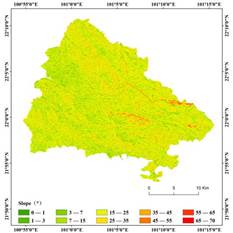 |
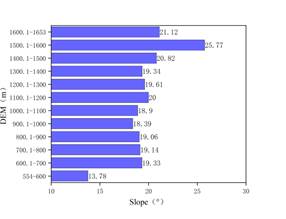 |
Climatic Data
According to the meteorological data from the Xishuangbanna Meteorological Bureau[2], located south of the Tropic of Cancer, Jinuoshan Township enjoys a humid subtropical and south subtropical monsoon climate with mild temperatures year-round (15–25°C in 2023), abundant sunshine, and balanced rainfall (800–1,200 mm annually). Annual sunshine duration of approximately 1,966.2 h enhances photosynthetic efficiency[6], high humidity, and frequent mist moderate solar radiation, reduce water stress, and enhance tea aroma. These conditions—combined with rich biodiversity and Jinuo cultural heritage—create an ideal microclimate for premium tea production (Figures 10, 11).
Vegetation Cover and Land Use
This dataset utilizes Sentinel-2 satellite data (spatial resolution 10 m)[3] to generate NDVI data for analyzing land cover in Jinuoshan Township (Figure 12), and Youle Village (Figure 13). Given the critical role of elevation in Pu’er tea production and quality, zonal mean NDVI statistics for Jinuoshan Township were calculated based on elevation bands (Figure 14).
Data show lower mean NDVI values below 600 m, likely due to reduced precipitation and urban development. Above 600 m, NDVI stabilizes at 0.83–0.86, with Youle Village’s high NDVI supporting abundant negative oxygen ions. These ions modify tea composition by reducing the content of astringent ester-type catechins (EGCG and ECG) while increasing simpler catechins (EGC and EC), boosting sugars and lowering caffeine, enhancing mellowness and sweetness[7], elevating ester compounds, imparting a distinctive aged-fruity aroma.
This study used processed Sentinel-2 data, to analyze land use in Jinuoshan Township (Figure 15) and Youle Village (Figure 16). The tea-growing region features diverse ecosystems (forests, farmland, water bodies, artificial surface, etc.), with forests being dominant. Youle Village’s exceptionally high forest coverage, creates ideal shaded microclimates for tea cultivation, maintains ecological balance through biodiversity, provides nutrient-rich soils that enhance tea quality.
Water Data
All rivers within Jinuoshan Township belong to the Lancang River basin, featuring a dense network of waterways and ravines with 24 municipal- and township-level rivers. This includes 7 municipal rivers such as Luosuo River, Longpa River, and Nanxian River, along with 17 township-level rivers including Yemao River, Nuoyou River, and Kuozheng River, etc[6], indicating abundant water resources. Growth of Jinuo Youle Tea primarily depends on fog moisture and natural precipitation, hence water quality testing involved minimal sampling. This study established one sampling point within Youle Ancient Tea Plantation (Figure 17). Sampling procedures required pre-rinsing the sample bottle 2–3 times with target water, followed by submerging the bottle mouth 20–30 cm below the water surface to allow filling. After complete submersion, the bottle was swiftly retrieved without disturbing sediment while preventing entry of surface debris.
Based on the Standard for irrigation water quality (GB 5084—2021)[8], the tested parameters encompassed 16 items: pH, water temperature, total salt content, chloride, suspended solids, hexavalent chromium, chemical oxygen demand (COD), total mercury, total arsenic, lead, cadmium, five-day biochemical oxygen demand (BOD₅), fecal coliform count, Ascaris egg count, sulfide, and anionic surfactants. Testing was conducted by Earthworm Soil Testing Laboratory (Shandong) Co., Ltd. Results confirmed that all water quality indicators in the case study area comply with national standards and meet environmental water quality requirements for ancient tea tree growth (Table 2).
Table 2 Water quality test results in the case area
| Indicator | Unit | Limit value | Test Result |
|---|---|---|---|
| pH | - | 5.5–8.5 | 7.3 |
| Water temperature | ℃ | 35 | 20 |
| Total salinity | mg/L | ≤1,000(Non-saline and non-alkaline soil areas) | 113 |
| Chlorides | mg/L | ≤350 | 16.58 |
| Suspended solids | mg/L | ≤100 | Not detected |
| Hexavalent chromium (Cr (VI)) | mg/L | ≤0.1 | Not detected |
| Chemical oxygen demand (COD) | mg/L | ≤200 | 9 |
| Total mercury | mg/L | ≤0.001 | Not detected |
| Total arsenic | mg/L | ≤0.1 | 0.001 |
| Cadmium | mg/L | ≤0.01 | Not detected |
| Lead | mg/L | ≤0.2 | Not detected |
| Five-day biochemical oxygen demand (BOD₅) | mg/L | ≤100 | 3 |
| Fecal coliform count | MPN/L | ≤40,000 | 20 |
| Ascaris egg count | count/10L | ≤20 | Not detected |
| Sulfides | mg/L | ≤1 | 0.013 |
| Anionic surfactants | mg/L | ≤8 | 0.07 |
Soil Condition
The soil in the case study area consists of lateritic red soil developed under conditions of purple sedimentary sandstone and monsoon rainforest, characterized by abundant organic matter, substantial thickness, moist fertility, and high productivity. This study collected soil samples from 9 ancient tea tree cultivation zones within the area (Figure 18). Soil profiles measuring approximately 1.0-m long × 0.8-m wide × 1.0-m deep were excavated. Samples were collected from layers at 20 cm intervals: 0–20 cm, 20–40 cm, 40–60 cm, 60–80 cm, and 80–100 cm depths, with approximately 1.5 kg obtained per layer (Figure 16). Through stratified soil sampling, fertility and environmental conditions were analyzed. Test parameters included: pH, total nitrogen, available phosphorus, available potassium, organic matter, cadmium (Cd), chromium (Cr), nickel (Ni), lead (Pb), zinc (Zn), copper (Cu), mercury (Hg), pesticide residues, and cation exchange capacity.
Analysis of soil profile samples (Table 3) reveals that the soil pH in the case study area ranges from 4.3 to 5.2, indicating typically acidic soil characteristics.
The soil analysis demonstrates favorable conditions for tea cultivation, with organic matter ranging 1.8–36.6 g/kg (mean 14.79 g/kg), available potassium 15–82 mg/kg (mean 35.36 mg/kg), available phosphorus 0.01–3.1 mg/kg (mean 0.64 mg/kg), and total nitrogen 0.016–0.165% (mean 0.088%). The mean cation exchange capacity (CEC) of 12.23 cmol/kg, within the optimal range for loamy soils (10–30 cmol/kg), indicates strong nutrient retention capacity. These soil characteristics ensure stable nutrient supply, promote efficient root absorption, and create ideal growing conditions that support robust tea plant development and high-quality tea production (Figure 19).
According to the Soil environmental quality risk control standard for soil contamination of agricultural land (Trial) (GB 15618—2018)[9], all tested indicators registered below soil contamination risk screening values (Table 4), with no pesticide residues detected. The superior soil environmental quality in the case study area fully satisfies regulatory requirements for tea production soils.
Table 3 Soil quality test results in the case area
| Sampling points | pH | Total nitrogen**(%)** | Available phosphorus**(mg/kg)** | Available potassium**(mg/kg)** | Organic matter**(g/kg)** | CEC**(cmol/kg)** | |
|---|---|---|---|---|---|---|---|
| P1 | 0–20 cm | 5.2 | 0.071 | 3.1 | 52 | 8.92 | 12.37 |
| 20–40 cm | 4.8 | 0.067 | 0.8 | 35 | 8.08 | 9.60 | |
| 40–60 cm | 4.9 | 0.080 | 0.4 | 35 | 8.87 | 8.84 | |
| 60–80 cm | 4.7 | 0.084 | 0.2 | 44 | 13.2 | 12.50 | |
| 80–100 cm | 4.4 | 0.146 | 0.1 | 72 | 23.3 | 12.42 | |
| P3 | 0–20 cm | 4.9 | 0.016 | 0.1 | 22 | 1.80 | 4.80 |
| 20–40 cm | 4.9 | 0.027 | 1.3 | 18 | 3.23 | 4.55 | |
| 40–60 cm | 4.8 | 0.033 | 0.2 | 15 | 4.18 | 6.31 | |
| 60–80 cm | 4.8 | 0.042 | 0.1 | 19 | 6.16 | 7.07 | |
| 80–100 cm | 4.6 | 0.099 | 0.2 | 43 | 19.8 | 10.35 | |
| P4 | 0–20 cm | 4.3 | 0.125 | 0.9 | 46 | 23.5 | 10.48 |
| 20–40 cm | 4.7 | 0.080 | 0.8 | 22 | 12.9 | 7.83 | |
| 40–60 cm | 4.7 | 0.060 | 0.01 | 24 | 11.1 | 7.83 | |
| 60–80 cm | 5.0 | 0.018 | 0.01 | 19 | 3.54 | 4.04 | |
| 80–100 cm | 4.9 | 0.029 | 0.8 | 19 | 3.35 | 6.44 | |
| P5 | 0–20 cm | 4.3 | 0.222 | 0.6 | 82 | 36.6 | 12.88 |
| 20–40 cm | 4.6 | 0.155 | 0.9 | 54 | 27.2 | 13.16 | |
| 40–60 cm | 4.7 | 0.090 | 1.3 | 31 | 15.6 | 12.12 | |
| 60–80 cm | 4.9 | 0.076 | 0.7 | 26 | 12.8 | 14.42 | |
| 80–100 cm | 4.9 | 0.062 | 0.8 | 23 | 7.56 | 8.61 | |
| P6 | 0–20 cm | 4.6 | 0.144 | 1.3 | 60 | 24.9 | 15.43 |
| 20–40 cm | 4.6 | 0.088 | 0.1 | 43 | 12.6 | 17.70 | |
| 40–60 cm | 4.9 | 0.066 | 0.2 | 42 | 8.55 | 19.70 | |
| 60–80 cm | 4.8 | 0.066 | 0.1 | 40 | 7.65 | 16.92 | |
| 80–100 cm | 5.0 | 0.058 | 1.1 | 40 | 4.11 | 9.54 | |
| P7 | 0–20 cm | 4.3 | 0.165 | 1.4 | 60 | 33.8 | 14.37 |
| 20–40 cm | 4.6 | 0.129 | 1.8 | 34 | 24.8 | 11.21 | |
| 40–60 cm | 4.7 | 0.103 | 0.2 | 30 | 18.8 | 11.62 | |
| 60–80 cm | 4.8 | 0.077 | 0.0 | 29 | 11.9 | 12.88 | |
| 80–100 cm | 4.8 | 0.067 | 0.1 | 26 | 8.06 | 11.41 | |
| P8 | 0–20 cm | 4.6 | 0.111 | 1.1 | 30 | 17.9 | 12.75 |
| 20–40 cm | 4.6 | 0.082 | 1.1 | 28 | 12.0 | 11.06 | |
| 40–60 cm | 4.7 | 0.066 | 0.6 | 23 | 11.1 | 11.87 | |
| 60–80 cm | 4.8 | 0.070 | 0.2 | 24 | 7.09 | 11.92 | |
| 80–100 cm | 4.8 | 0.063 | 0.1 | 29 | 9.17 | 16.19 | |
| P9 | 0–20 cm | 4.4 | 0.125 | 1.2 | 40 | 28.8 | 13.43 |
| 20–40 cm | 4.5 | 0.106 | 0.2 | 32 | 24.2 | 16.61 | |
| 40–60 cm | 4.6 | 0.099 | 0.2 | 31 | 17.8 | 19.44 | |
| 60–80 cm | 4.6 | 0.094 | 0.2 | 31 | 14.9 | 24.37 | |
| 80–100 cm | 4.8 | 0.079 | 0.2 | 29 | 11.0 | 14.17 | |
| P10 | 0–20 cm | 4.6 | 0.148 | 2.5 | 41 | 24.6 | 11.49 |
| 20–40 cm | 4.6 | 0.117 | 1.2 | 34 | 20.8 | 15.66 | |
| 40–60 cm | 4.6 | 0.092 | 0.2 | 56 | 19.1 | 17.62 | |
| 60–80 cm | 4.6 | 0.083 | 0.2 | 31 | 17.3 | 12.32 | |
| 80–100 cm | 4.6 | 0.078 | 0.2 | 27 | 22.8 | 13.94 |
Note: In this case, soil sampling was carried out in two batches, and repeated sampling was carried out at P2 and P3 in the two batches, so one duplicate sample P2 was removed during the test, the same below.
| Figure 19 Statistical plots of soil total nitrogen, available phosphorus, available potassium and organic matter in different soil layers[yj5] |
|---|
Table 4 Statistical table of soil environmental index detection results in the case area
| Text items | Risk screening value | Test result | ||||||||
|---|---|---|---|---|---|---|---|---|---|---|
| P1 | P3 | P4 | P5 | P6 | P7 | P8 | P9 | P10 | ||
| Pb**(mg/kg)** | 70 | 29 | 22 | 22 | 29 | 25 | 24 | 25 | 17 | 16 |
| Cd**(mg/kg)** | 0.3 | 0.27 | Not detected | 0.02 | Not detected | 0.10 | Not detected | Not detected | Not detected | Not detected |
| Cr**(mg/kg)** | 150 | 80 | 23 | 24 | 40 | 66 | 42 | 55 | 51 | 51 |
| As**(mg/kg)** | 40 | Not detected | Not detected | Not detected | Not detected | Not detected | Not detected | Not detected | Not detected | Not detected |
| Hg**(mg/kg)** | 1.3 | 0.12 | 0.04 | 0.16 | 0.21 | 0.13 | 0.18 | 0.15 | 0.16 | 0.15 |
| Cu**(mg/kg)** | 50 | 35 | 4 | 3 | 6 | 11 | 4 | 8 | 11 | 8 |
| Zn**(mg/kg)** | 200 | 65 | 22 | 17 | 28 | 33 | 19 | 26 | 39 | 34 |
| Ni**(mg/kg)** | 60 | 20 | 5 | 6 | 10 | 8 | 6 | 8 | 9 | 8 |
| α**-HCH** (μg/kg**)** | Not detected | Not detected | Not detected | Not detected | Not detected | Not detected | Not detected | Not detected | Not detected | |
| HCB (μg/kg**)** | Not detected | Not detected | Not detected | Not detected | Not detected | Not detected | Not detected | Not detected | Not detected | |
| γ-HCH (μg/kg**)** | Not detected | Not detected | Not detected | Not detected | Not detected | Not detected | Not detected | Not detected | Not detected | |
| β-HCH (μg/kg**)** | Not detected | Not detected | Not detected | Not detected | Not detected | Not detected | Not detected | Not detected | Not detected | |
| δ-HCH (μg/kg**)** | Not detected | Not detected | Not detected | Not detected | Not detected | Not detected | Not detected | Not detected | Not detected | |
| o,p′-DDT (μg/kg**)** | Not detected | Not detected | Not detected | Not detected | Not detected | Not detected | Not detected | Not detected | Not detected | |
| p,p′-DDT (μg/kg**)** | Not detected | Not detected | Not detected | Not detected | Not detected | Not detected | Not detected | Not detected | Not detected |
Jinuo Youle Tea Data
This study commissioned the China National Food Science Research Institute Co., Ltd. (National Center for Quality Supervision and Testing of Non-Staple Food) to conduct quality testing and analysis of Jinuo Youle Tea. The selected indicators encompassed 2 aspects: physical-chemical indicators and safety indicators[10–13]. All corresponding test results complied with the requirements of: GB 2763—2021[14], GB/T 22111—2008[15], and GB 2760—2024[16].
(1)Physical and chemical indicators
Moisture content (7.55% in Jinuo Youle Tea, Table 5) is a key quality determinant. While excessive moisture accelerates aging, microbial growth, and spoilage risk[10], our measurements fully comply with GB/T 22111—2008 standards.
Tea ash refers to inorganic residues after high-temperature ashing and holds significance for quality assessment and sanitary inspection. Total ash content correlates with tea leaf maturity, quality grade, and sediment impurities[12]. Jinuo Youle Tea exhibits a total ash content of 5.6%, meeting standard requirements.
Water extract represents substances soluble in hot water, constituting the primary flavor components in tea infusion. It mainly includes water-soluble tea polyphenols and their derivatives, caffeine, organic acids, free amino acids, and carbohydrate compounds. The water extract level directly determines tea liquor color, taste, and concentration[17]. Jinuo Youle Tea contains 46.3% water extract, significantly exceeding the GB/T 22111—2008 requirement of >35.0% for raw Pu’er tea.
Jinuo Youle Tea contains 29.8% tea polyphenols—meeting quality standards. These compounds (catechins, flavonoids, flavonols, phenolic acids, etc.) create characteristic bitter-astringent tastes with sweet afternotes, while forming tea’s color, aroma, and health-promoting properties[18].
Caffeine—another primary bioactive component in tea infusion—manifests as bitterness[19]. Though bitterness itself isn’t a pleasurable taste, it crucially balances flavors and regulates physiological functions while enhancing overall flavor complexity when combined with other taste elements[20].
Amino acids constitute 2%–4% of tea dry matter. Contributing sweet and refreshing tastes while mitigating bitterness and astringency, they critically shape tea’s desirable flavor and aroma profiles. These compounds serve as essential quality evaluation factors[18]. Moreover, amino acid metabolites regulate growth and enhance immunity, vital for maintaining normal physiological development[21].
Primary amino acids in tea include L-theanine, glutamic acid, lysine, aspartic acid, threonine, phenylalanine, and serine[15]. Jinuo Youle Tea demonstrates rich amino acid diversity, with 16 types detected at significant concentrations.
Table 5 Test results of physical and chemical components of Jinuo Youle Tea
| No. | Test items | Standard code | Restricted value | Test result | Test method | Individual decisio |
|---|---|---|---|---|---|---|
| 1 | pH | ---- | ---- | 5.46 | GB 5009.237—2016 | ---- |
| 2 | Powder(%) | ---- | ---- | 0.5 | GB/T 8311—2013 | ---- |
| 3 | Water extract(%) | GB/T 22111—2008 | ≥35.0 | 46.3 | GB/T 8305—2013 | Qualified |
| 4 | Fluorine (calculated as F -) (mg/kg) | ---- | ---- | 70 | GB/T 5009.18—2003 Method 3 | ---- |
| 5 | Total ash content (%) | GB/T 22111—2008 | ≤7.5 | 5.6 | GB 5009.4—2016 Method 1 | Qualified |
| 6 | Caffeine(%) | ---- | ---- | 3.0 | GB/T 8312—2013 Method 1 | ---- |
| 7 | Moisture(%) | GB/T 22111—2008 | ≤13.0 | 7.55 | GB 5009.3—2016 Method 1 | Qualified |
| 8 | Tea polyphenols (%) | GB/T 22111—2008 | ≥28.0 | 29.8 | GB/T 8313—2018 4 | Qualified |
| 9 | Phenylalanine (g/100g) | ---- | ---- | 0.83 | GB 5009.124- 2016 | ---- |
| 10 | Alanine(g/100g) | ---- | ---- | 1.08 | GB 5009.124- 2016 | ---- |
| 11 | Methionine (g/100g) | ---- | ---- | 0.078 | GB 5009.124- 2016 | ---- |
| 12 | Glycine(g/100g) | ---- | ---- | 0.99 | GB 5009.124- 2016 | ---- |
| 13 | Glutamic acid (g/100g) | ---- | ---- | 3.98 | GB 5009.124- 2016 | ---- |
| 14 | Arginine(g/100g) | ---- | ---- | 0.85 | GB 5009.124- 2016 | ---- |
| 15 | Lysine(g/100g) | ---- | ---- | 1.53 | GB 5009.124- 2016 | ---- |
| 16 | Tyrosine(g/100g) | ---- | ---- | 0.61 | GB 5009.124- 2016 | ---- |
| 17 | Leucine(g/100g) | ---- | ---- | 1.37 | GB 5009.124- 2016 | ---- |
| 18 | Proline(g/100g) | ---- | ---- | 0.69 | GB 5009.124- 2016 | ---- |
| 19 | Serine(g/100g) | ---- | ---- | 0.84 | GB 5009.124- 2016 | ---- |
| 20 | Threonine(g/100g) | ---- | ---- | 0.79 | GB 5009.124- 2016 | ---- |
| 21 | Aspartic acid (g/100g) | ---- | ---- | 1.76 | GB 5009.124- 2016 | ---- |
| 22 | Valine(g/100g) | ---- | ---- | 1.14 | GB 5009.124- 2016 | ---- |
| 23 | Isoleucine(g/100g) | ---- | ---- | 0.80 | GB 5009.124- 2016 | ---- |
| 2**4** | Histidine(g/100g) | ---- | ---- | 0.72 | GB 5009.124- 2016 | ---- |
(**2)**Safety indicators
As the world's largest tea producer, China faces significant challenges in tea quality and safety, particularly regarding pesticide residue exceedances—a major constraint on domestic tea industry development and the most frequently reported issue by importing countries. Since 2017, China’s implementation of the “Agricultural Green Development” policy has encouraged alignment with international standards to enhance tea quality. This reform initiative positively drives industrial chain transformation and elevates the global competitiveness of tea brands, while simultaneously promoting international standardization of regulatory systems to safeguard consumer health. Jinuo Youle Tea underwent 232 safety indicator tests according to EU standards, with all results returning non-detected. Concurrently, the tea complies with both GB 2763—2021 and GB 2760—2024 requirements (Figure 20). This compliance strengthens its brand credibility for domestic and international markets.
(3)Sensory evaluation
Sensory evaluation of Jinuo Youle Tea was conducted in accordance with the Tea Sensory Evaluation Method (GB/T 23776—2018)[22] of China, assessing both appearance and liquor quality characteristics. Detailed evaluation results are presented in Table 6.
Table 6 Sensory evaluation results of Jinuo Youle Tea
| Samples | Appearance | Internal quality | ||||||
|---|---|---|---|---|---|---|---|---|
| Aroma | Soup | Taste | Residue | |||||
| 2020 Jinuo Youle Tea | The shape of tightly rolled, with some buds; brownish-yellow color, relatively smooth and lustrous, uniform | Fresh and pure, with floral notes, long-lasting | Bright orange-yellow | Sweet and mellow, with a lingering aftertaste | Yellowish-brown, bright, thick, soft, and with stems | |||
| 2023 Jinuo Youle Tea | The shape of tightly rolled, brownish-yellow color, uniform | Fresh, slightly pure, and long-lasting | Bright orange-yellow | Sweet and mellow, with a slight astringency | Bright greenish-yellow, thick, soft, uniform | |||
| 2024 Jinuo Youle Tea | The shape of tightly rolled, greenish-yellow with a lustrous finish, relatively uniform and clean. | High, fresh floral fragrance, long-lasting. | Bright yellow | Mellow and smooth with a sweet aftertaste | Bright yellow-green, soft, with stems | |||
| 2025 Jinuo Youle Tea | The shape of coarse and loose , greenish-yellow, relatively uniform and clean | Fresh, slightly pure, with a Sundried odor | Bright greenish-yellow | Mellow, with a smooth aftertaste and slight astringency | Bright greenish-yellow, soft | |||
| 2022 Jinuo Youle Cake Tea | Well-formed cake, moderate tightness, brownish-yellow with an oily sheen, uniform. | Sweet and pure, with a honeyed fragrance, long-lasting | Bright orange-yellow | Sweet, mellow, with a smooth and lasting aftertaste | Reddish-brown, soft and shiny | |||
| 2023 Jinuo Youle Cake Tea | Well-formed cake, moderate tightness, brownish-green with an oily sheen, uniform | Sweet, slightly pure, long-lasting | Bright orange-yellow | Mellow, with a strong aftertaste and smooth texture | Reddish-brown, soft and shiny | |||
| 2025 Case Study Area Young Tea | Relatively tight leaves, dark greenish with a lustrous finish, uniform and clean, with stems | Fresh and pure, long-lasting | Bright yellow-green | Sweet, mellow, with a slight astringency and lingering aftertaste | Bright yellow-green, soft, with stems | |||
Jinuo Youle Tea is characterized by its pure floral aroma, refreshing mellowness and lingering sweetness. During storage, the compressed tea undergoes a distinctive transformation: the aroma evolves from fresh floral to honeyed sweetness, while the taste develops from full-bodied to velvety smoothness. These superior aging characteristics are attributed to the tea’s rich amino acid content, diverse nutrients, and the unique high-anion microenvironment of its growing region. Notably, ancient tree tea demonstrates significantly greater aromatic complexity, flavor richness and sensory depth compared to terrace-grown varieties from the same area, making it a premium product with exceptional quality potential.
History, Culture and Management
The History and Culture of Jinuo Youle Tea
Located east of Jinghong City, Jinuo Mountain—ancestral home of the tea-cultivating Jinuo people—hosts the renowned Youle Tea Mountain, one of China’s 6 ancient tea mountains[23] with origins tracing to the Song Dynasty. Designated as a tribute tea during the Qing Dynasty (1729), its tea industry suffered decline during the Republican era due to trade monopolies and warfare, before reviving in the 1980s. Historically, Youle Tea Mountain served as a key node on the Ancient Tea-Horse Road, exporting tea to India and Europe while establishing Jinuo Mountain as both a cultural landmark and global ambassador of Chinese tea traditions[24].
During the Shennong era, tea was primarily valued for medicinal purposes and basic consumption. The Jinuo people’s millennia-old practices gradually evolved into distinctive cultural expressions: chilled herbal tea blended with spices, leaf-wrapped roasted tea, and ceremonial tea liquor; rituals honoring tea deities and tea insects; and drum ceremonies sanctified with tea offerings. The enduring intangible cultural heritage of the Jinuo “Sun-drum Dance” stands as living testament to these ancient tea-drum rituals.
The Jinuo “chilled herbal tea” involves pounding fresh tea leaves with chili peppers, salt, and other seasonings—a culinary tradition preserving humanity’s earliest tea utilization methods dating back to Shennong’s era. This ancient practice not only maintains prehistoric tea consumption patterns but also incorporates distinctive Jinuo cultural elements, forming a unique tea cultural legacy[25].
Production Process of Jinuo Youle Tea
According to statistical data, Jinuoshan Township cultivates a total tea plantation area of 1,891.67 ha, encompassing ancient tree tea, terrace-grown tea, and organic tea, with an annual yield of 1,602 tons across 38 village units[6]. Within this, Youle Ancient Tea Garden covers over 120 ha, producing approximately 70 tons annually. Additionally, scattered ancient tea trees thrive in locations including Mo Zhuo, Situ Old Village, etc.
Jinuo Youle Tea primarily comes from ancient tea trees. To ensure sustainable quality and tree preservation, production follows a “conservation-first” approach with regulated harvesting. The traditional processing method involves 5 key steps: plucking, withering, fixation, kneading, and sunlight drying (Figure 21).
Plucking prioritizes spring tea and autumn tea—sometimes exclusively spring harvests—differing from modern three-season yield-focused approaches. This practice significantly ensures sustainable development. Given the height of ancient trees, manual climbing harvest is required (Figure 22), with plucking standards set at “two leaves and a bud”. Experienced pickers collect 5–6 kg fresh leaves daily, which must be transported downhill promptly to prevent reddening.
Withering involves spreading fresh leaves evenly to facilitate moisture evaporation and softening for fixation. Fixation employs high temperatures to deactivate enzymes, eliminate grassy odors and bitterness, promote aromatic compound formation, and soften leaves for rolling. Fixation temperature and duration are adjusted based on seasonal conditions, leaf maturity, and batch weight. Manual fixation handles 5–10 kg per batch at 220–250 °C, ensuring thorough and even treatment. Post-fixation leaves are cooled before kneading. Most farmers hand-roll leaves in bamboo trays, allowing precise pressure control that produces intact, moderately tight twisted strips. Kneaded and separated leaves are sunlight dried into maocha (rough tea). Approximately 4–5 kg fresh leaves yield 1 kg dried tea. After manual sorting to remove impurities and yellow flakes, dried tea is stored or compressed into various shapes at pressing workshops.
Management and Industrial Development
Jinuoshan Township has established a farmer-centered, government-guided, and society-participated governance mechanism to promote high-quality tea industry development by integrating ancient tea garden conservation into village covenants. These regulations enforce strict protection of tea tree resources (prohibiting logging, over-harvesting, and harmful chemicals), standardized plucking practices to ensure quality, and oversight mechanisms to prevent counterfeit “Youle Tea” and protect regional brand authenticity. Through collective action—including village councils and militia patrols—the township has successfully maintained compliance, intercepting external tea inflows since 2019, thereby preserving the ecological and economic value of Youle ancient tea gardens while securing local livelihoods.
The covenants ensure tea quality and brand reputation, allowing farmers—especially those with ancient tea trees—to earn stable, higher incomes through premium pricing. Meanwhile, local industry development emphasizes technology, with village officials visiting top tea regions for insights and annual training (20+ sessions like “Tea Mountain Visits”) by agricultural stations and tea associations. This sustainable growth reflects a “people-centered” approach, balancing ecological preservation and profitability through regulations, technical training, and project-driven strategies.
The township has constructed an integrated “enterprise + cooperative + farmer” supply chain system, uniting 3 tea factories, 14 cooperatives, and 545 primary processing units to engage 1,820 tea households. Through branded operation (“Jinuo Youle”) and traceability management, average organic tea prices rose from 20–30 CNY/kg to 200–300 CNY/kg, with ancient tree tea reaching 1,200–4,000 CNY/kg.
To meet evolving market demands, local producers have diversified into ancient tree white tea, black tea, and ripe Pu’er, expanding product offerings. A three-tier talent system has trained 300+ intangible cultural heritage inheritors and entrepreneurs through 31 workshops on tea cultivation and processing, while tea competitions enhance industry standards. Deepening tri-sector integration, the township upgraded processing techniques and launched ancient tea mountain cultural tourism projects, revitalizing historical brands through the “Laobola” Tea Culture Festival. Recent initiatives include rainforest trekking and Jinuo cuisine tourism, establishment of intangible heritage villages and tea-tourism demonstration sites, construction of the “Hiking Youle Ancient Tea Mountain” trail, and standardized primary processing facilities. Combining culture with tourism, 5 consecutive Youle Tribute Tea Festivals featured dedicated awards, fostering a demonstration model of “ancient tea trees + cultural tourism + wellness” integration that boosted household income by 12,000 CNY and raised total output value above 300 million CNY. To strengthen quality control, governments established standardized management systems, founded the Xishuangbanna Youle Lachalashou Agricultural Cooperative, registered the proprietary trademark “Jinuo Youle” (Figure 23), transitioned from individual farming to collective operations with a self-developed traceability system, and implemented comprehensive quality supervision.
Discussion and Conclusion
Jinuo Youle Tea has established itself as a Pu’er tea rarity through its unique ecological environment, historical heritage, and traditional craftsmanship, yet faces 3 key constraints: (1) Market confusion regarding ancient tree tea, where widespread abuse of the “century-old ancient tree” label misleads consumers into equating ordinary tea with authentic ancient tree tea; (2) Prevalent tourism market fraud, involving terrace-grown tea falsely marketed as ancient tree tea, damaging brand credibility; (3) Limited production scale and high artisanal costs, compounded by buyer price suppression, resulting in low farmer income. Recommendations for sustainable development: Strengthen scientific literacy and certification systems via media campaigns and tea events to clarify distinctions between ancient tree tea (century-old trees, specific habitats) and terrace-grown tea, enhancing consumer discernment; Improve market supervision to combat counterfeiting, with industry associations establishing standardized criteria; Deepen “enterprise-farmer” cooperation by leveraging intangible cultural heritage inheritors to develop premium products. Utilize brand premiums to elevate raw leaf value, stabilize prices through sales-production contracts, and extend the industrial chain via eco-tourism—ensuring farmer income growth alongside sustainable industry advancement.
References
[1] Yao, S. Youle Mountain and the tribute tea of Pu’er [J]. China Geographical Names, 2016(1): 65–67.
[2] Liu, C., Yu, X. H., Sun, Y. W., et al. Summary report of the 1st symposium on GI environment and sustainability [J]. Journal of Global Change Data & Discovery, 2021, 5(1): 108.
[3] Wang, Z. X. Summary report of the 2nd show cases symposium on GI environment and sustainability [J]. Journal of Global Change Data & Discovery, 2021, 5(1): 109.
[4] Kang, L., Lu, J. J., Liu, H. X., et al. GIES case on ancient tea gardens of Jinuo Youle Tea in tropical mountainous regions [J/DB/OL]. Digital Journal of Global Change Data Repository, 2025. https://doi.org/10.3974/geodb.2025.05.09.V1.
[5] GCdataPR Editorial Office. GCdataPR data sharing policy [OL]. https://doi.org/10.3974/dp.policy.2014.05(Updated 2017).
[6] Jinghong Municipal People’s Government. Basic overview of Jinghong city in 2023 [EB/OL]. (2024-02-22) [2024-02-22]https://www.jhs.gov.cn/226.news.detail.dhtml?news_id=123948.
[7] Venter, Z. S., Barton, D. N., Chakraborty, T., et al. Global 10 m land use land cover datasets: a comparison of Dynamic World, World Cover and Esri Land Cover [J]. Remote Sensing, 2022, 14, 4101.
[8] Ministry of Ecology and Environment of the People's Republic of China, State Administration for Market Regulation. Standard for irrigation water quality (GB 5084—2021) [S]. Beijing: China Environment Publishing Group, 2021.
[9] Ministry of Ecology and Environment of P. R. China, State Administration of Market Regulation. Soil environmental quality risk control standard for soil contamination of agricultural land (Trial) (GB 15618—2018) [S]. Beijing: China Environment Publishing Group, 2018.
[10] Jiang, D. H., Luo, Y. M., Yang, Z. H., et al. Product quality analysis of Jing-mai ancient mountain Pu’er tea in Yunnan Province [J]. Food Research and Development, 2018, 39(6): 128–134.
[11] Yang, H. B., Tan, H., Xie, F., et al. Study on tea examining items and their limits standards [J]. Guizhou Science, 2008, (2): 94–96.
[12] He, M. X., Yang, J., Zhu, Y. T., et al. The current situation and suggestion on quality and safety indicators of tea in China [J]. China Food Safety Magazine, 2024, 39(6): 128–134.
[13] Yi, W. J., Li, X. Y., Li, Y. T. Physical and chemical properties of soil in Pu’er tea farms in Yunnan Province [J]. Journal of Beijing Normal University (Natural Science), 2011, 47(1): 80–84.
[14] National Health Commission of P. R. China, Ministry of Agriculture and Rural Affairs of P. R. China, State Administration for Market Regulation. National food safety standard: maximum residue limits for pesticides in food (GB 2763-2021) [S]. Beijing: China Agriculture Press, 2021.
[15] General Administration of Quality Supervision, Inspection and Quarantine of P. R. China, Standardization Administration of China. Product of geographical indication: Pu’er tea (GB/T 22111—2008) [S]. Beijing: Standards Press of China, 2008.
[16] National Health Commission of P. R. China, State Administration for Market Regulation. National food safety standard: standard for use of food additives (GB 2760—2024) [S]. Beijing: Standards Press of China, 2024.
[17] Wan, X. C. Biochemistry of Tea (3rd Edition) [M]. Beijing: China Agriculture Press, 2003.
[18] Yang, Y. J., Shang, W. Q., Li, Y. Y., et al. Biochemical index analysis and screening of special tea plant germplasms from ancient Pu’er tea plants in Jinghong of Yunnan [J]. Acta Agriculturae Boreali-occidentalis Sinica, 2017, 26(3): 448–454.
[19] Yu, P., Yeo, A., Low, M., et al. Identifying key non-volatile compounds in ready-to-drink green tea and their impact on taste profile [J]. Food Chemistry, 2014, 155: 9–16.
[20] Kim, M., Son, H., Kim, Y., et al. Umami–bitter interactions: the suppression of bitterness by umami peptides via human bitter taste receptor [J]. Biochemical and Biophysical Research Communications, 2015, 456(2): 586–590.
[21] Zhang, R. J., Lu, W. H., Yao, Y., et al. Metabolomics analysis of the 3D L-02 cell cultures revealing the key role of metabolism of amino acids in ameliorating hepatotoxicity of perfluorooctanoic acid [J]. The Science of the Total Environment, 2022, 806: 150438.
[22] General Administration of Quality Supervision, Inspection and Quarantine of P. R. China, Standardization Administration of P. R. China. Methods for sensory evaluation of tea (GB/T 23776—2018) [S]. Beijing: Standards Press of China, 2018.
[23] The State Ethnic Affairs Commission of P. R. China. An overview of the Jinuo ethnic group [EB/OL]. https://www.neac.gov.cn/seac/ztzl/jnz/gk.shtml.
[24] Office for Developing Biological Industries of the People’s Government of Xishuangbanna Dai Autonomous Prefecture. Chronicles of tea in Xishuangbanna prefecture [M]. Kunming: Yunnan People’s Publishing House, 2018.
[25] Zhou, H. J., Li, Y. L. Ethnic Tea Art Studies [M]. Beijing: China Agriculture Press, 2018.
Case Team
Principle Investigator
Principle Investigator Kang Lei
Kang Lei serves as an Associate Professor and Master’s Supervisor at the Institute of Geographic Sciences and Natural Resources Research, Chinese Academy of Sciences (CAS). After earning her Ph.D. in Human Geography from the same institute in 2017, she has continued her research career there, specializing in urban human-environment interactions, economic geography, and regional sustainable development. Her extensive research portfolio includes leadership and participation in over 20 national projects, such as those funded by the National Natural Science Foundation of China, CAS Strategic Priority Research Programs, and the Beautiful China Initiative assessment. Her scholarly contributions encompass more than 20 first/corresponding-author publications, one independently authored monograph, co-authorship in five academic volumes, and six policy advisory reports adopted by national decision-making bodies.
Expert members of the case team
Kang Lei Institute of Geographic Sciences and Natural Resources Research, Chinese Academy of Sciences Associate Professor and Master's Supervisor
Lu Jiajie Hebei GEO University Master's Candidate
Liu Huaixin Hubei University of Technology Master's Candidate
Yang Fengbo China Science Publishing & Media Ltd. Associate Senior Editor
Tian Qian Yunnan Minzu University Professor
Li Jiaxin Minzu University of China Ph.D. Candidate
Zhou Hongjie Yunnan Agricultural University Professor and Doctoral Supervisor
Xue Xiaoting Zhou Hongjie Master Studio National Senior Tea Examiner and Trainer
Yu Kannan Ethnic and Religious Affairs Bureau of Xishuangbanna Dai Autonomous PrefectureDirector
Kong Zhen Xishuangbanna Dai Autonomous Prefecture Meteorological Bureau Director
Zeng Song Jinuoshan Jinuo Ethnic Township People's Government Township Head
Bai Siqin Xishuangbanna Youle Ren Lachala Shou Agricultural Professional Cooperative Chairperson
Jie Bulu Jinghong Amaozuomi Primary Tea Processing Factory Senior Tea Master
Liang Mingyu Beijing Liang Mingyu Glass Art Design Co., Ltd. Tea Aesthetics Specialist
Author Contributions
Kang, L. conceived the overall framework of this case study, including designing the dataset architecture, establishing the research paper structure, developing methodological approaches, and designing the writing strategy. She co-organized on-site case study workshops with Tian, Q. Kang, L., Li, J. X., and Liu, H. X. participated in field investigations. Li, J. X., Liu, H. X., Bai, S. Q., and Jie, B. L. conducted soil and water sample collection. Lu, J. J. was responsible for data acquisition, analysis, processing, and creating graphical materials. Yu, K. N. coordinated support from governmental units and facilitated local cultural data collection. Kong, Z. gathered meteorological data. Zeng, S., Jie, B. L. collected tea-related cultural data of the Jinuo ethnicity. Zeng, S. acquired business management and economic development data. Bai, S. Q., Jie, B. L. compiled tea product characteristic data. Kang, L., Li, J. X., Lu, J. J., Liu, H, X., Xue, X. T., Yang, F. B., Tian, Q., and Liang, M. Y. participated in manuscript drafting. Zhou, H. J., Xue, X. T., and Yang, F. B. contributed to manuscript revision.
Acknowledgments
We extend our gratitude to Professor Liu, C., Song, X. F., and Wang, Z. B. from the Institute of Geographic Sciences and Natural Resources Research, Chinese Academy of Sciences for their expert guidance and support throughout the data collection and manuscript development of this case study. We sincerely thank officials at all administrative levels—Xishuangbanna Dai Autonomous Prefecture, Jinghong City, and Jinuoshan Township—for their invaluable support and cooperation. Special appreciation is expressed to Associate Professor Song, W., Dr. Yu, H., and all supporting staff for their assistance in soil and water sample collection and analytical processes.
